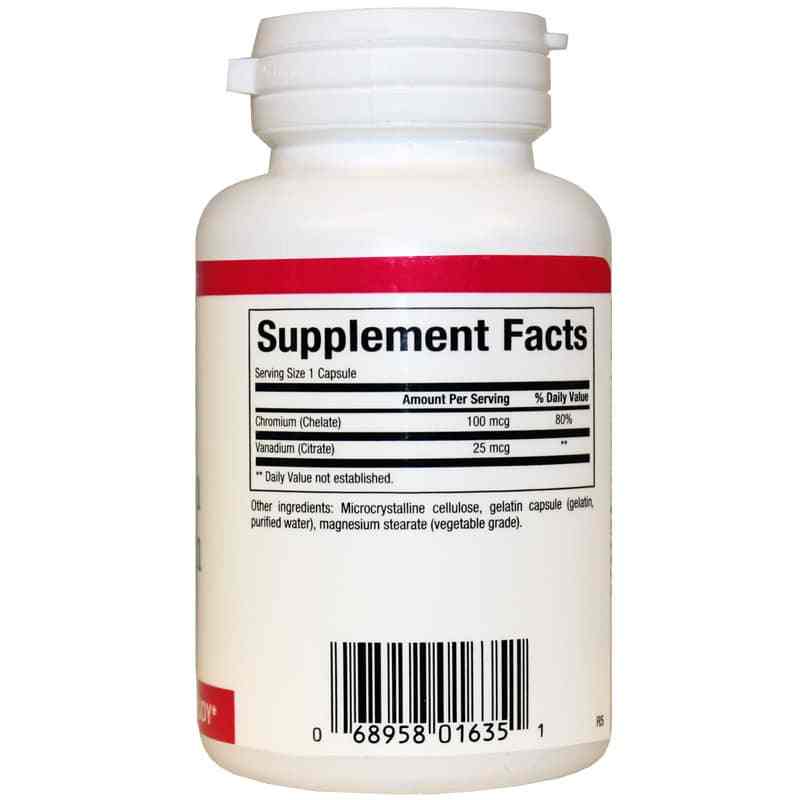

Del Río accepted Collet-Descotils' statement and retracted his claim. In 1805, French chemist Hippolyte Victor Collet-Descotils, backed by del Río's friend Baron Alexander von Humboldt, incorrectly declared that del Río's new element was an impure sample of chromium. Later, del Río renamed the element erythronium (Greek: ερυθρός "red") because most of the salts turned red upon heating. He found that its salts exhibit a wide variety of colors, and as a result, he named the element panchromium (Greek: παγχρώμιο "all colors"). Del Río extracted the element from a sample of Mexican "brown lead" ore, later named vanadinite. Vanadium was discovered in Mexico in 1801 by the Spanish mineralogist Andrés Manuel del Río. Particularly in the ocean, vanadium is used by some life forms as an active center of enzymes, such as the vanadium bromoperoxidase of some ocean algae. The oxide and some other salts of vanadium have moderate toxicity. Large amounts of vanadium ions are found in a few organisms, possibly as a toxin. The vanadium redox battery for energy storage may be an important application in the future. The most important industrial vanadium compound, vanadium pentoxide, is used as a catalyst for the production of sulfuric acid. It is mainly used to produce specialty steel alloys such as high-speed tool steels, and some aluminium alloys. Other countries produce it either from magnetite directly, flue dust of heavy oil, or as a byproduct of uranium mining. It is produced in China and Russia from steel smelter slag. Vanadium occurs naturally in about 65 minerals and fossil fuel deposits. In 1867 Henry Enfield Roscoe obtained the pure element. Del Rio's lead mineral was ultimately named vanadinite for its vanadium content. The name was based on the wide range of colors found in vanadium compounds. Then in 1830, Nils Gabriel Sefström generated chlorides of vanadium, thus proving there was a new element, and named it "vanadium" after the Scandinavian goddess of beauty and fertility, Vanadís (Freyja). Though he initially presumed its qualities were due to the presence of a new element, he was later erroneously convinced by French chemist Hippolyte Victor Collet-Descotils that the element was just chromium. Spanish- Mexican scientist Andrés Manuel del Río discovered compounds of vanadium in 1801 by analyzing a new lead-bearing mineral he called "brown lead".
#Chromium vanadium free
The elemental metal is rarely found in nature, but once isolated artificially, the formation of an oxide layer ( passivation) somewhat stabilizes the free metal against further oxidation. It is a hard, silvery-grey, malleable transition metal. Railroad tracks, for example, are made with steel that contains manganese.Vanadium is a chemical element with the symbol V and atomic number 23. Larger amounts (between 2% and 10%) produce somewhat brittle steel, while still larger amounts (11% to 14%) produce a steel that is tough and very resistant to wear after proper heat treatment. Small amounts of manganese produce strong, free-machining steels. The amount of manganese used depends upon the properties desired in the finished product. This is the ability to continue to cut after it becomes red-hot.īecause this alloy is expensive to produce, its use is largely restricted to the manufacture of drills, lathe tools, milling cutters, and similar cutting tools. This is a special alloy that has the property of red hardness. This steel is also used in the manufacture of high-quality hand tools, such as wrenches and sockets. Common uses are for crankshafts, gears, axles, and other items that require high strength.

Steels of this type contain from 0.15% to 0.25%. This steel has the maximum amount of strength with the least amount of weight. Chromium steels are highly resistant to corrosion and to scale. Some of these steels are so highly resistant to wear that they are used for the races and balls in antifriction bearings. These steels contain between 0.20% to 0.75% chromium and 0.45% carbon or more. These steels have chromium added to improve hardening ability, wear resistance, and strength. Nickel steel is used in the manufacture of aircraft parts, such as propellers and airframe support members. Nickel steel' containing more than 5% nickel has an increased resistance to corrosion and scale. The nickel increases the strength and toughness of these steels. These steels contain from 3.5% nickel to 5% nickel.


 0 kommentar(er)
0 kommentar(er)
